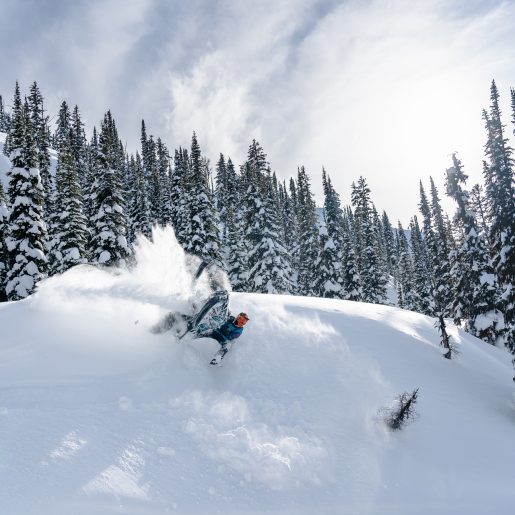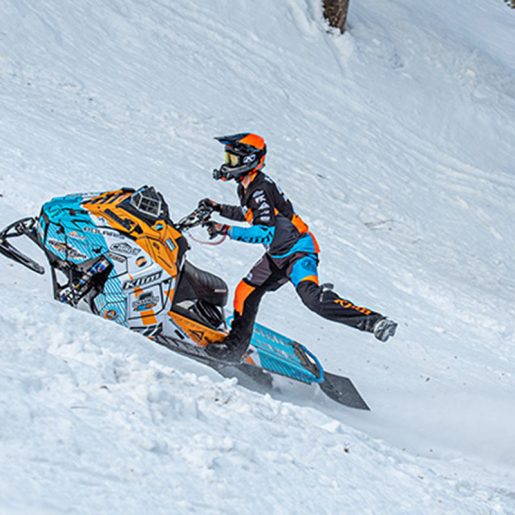Why do you ride?
There will always be something about the mixture of snowmobile exhaust and a crisp winter morning that makes me feel nostalgic. It takes me back to the memories of sitting on my Dad’s knee, barely able to reach the handlebars, while he let me drive the snowmobile. That’s when my passion for sledding began.
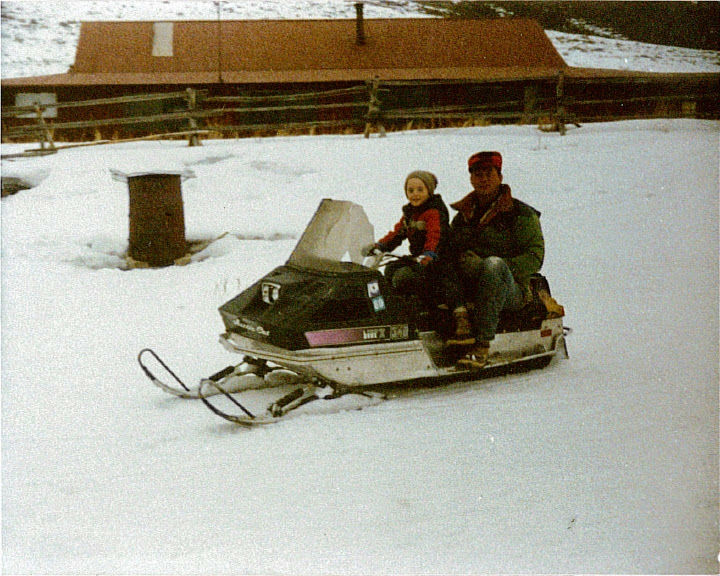
Riding on Dad’s knee on the Lynx II. Photos courtesy of the Sander family.
When I turned four years old, my sister and I were given two old sleds to play with in our pasture by ourselves; one was a Panther and one was a Lynx II. My parents had just gotten a new set of matching 1980 Panteras and a trailer for themselves, so we got the old hand-me-downs. We spent hours at a time riding in the pasture that entire winter. We would come up with games like treasure hunts, mini-races, or the never dull: “see if you can kill your sibling on an inner tube” game. I almost decapitated myself once on the hitching rack in our pasture, as I was looking back at my sister on the inner tube.
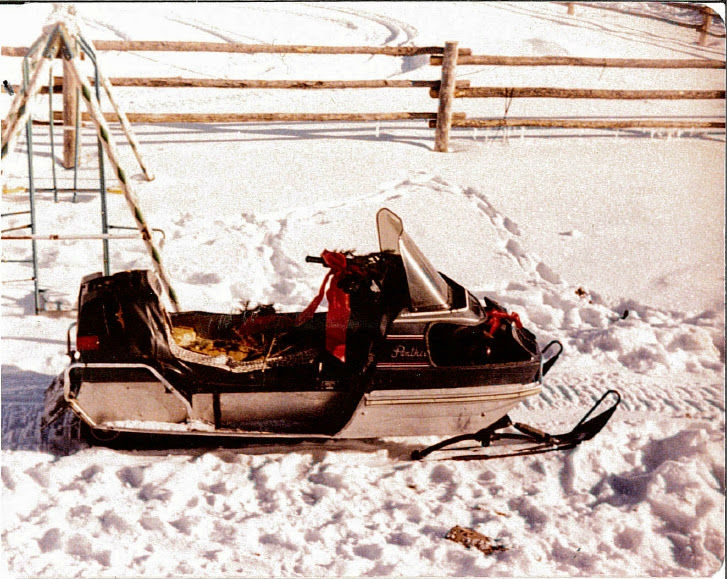
My first sled.
There were some valuable lessons learned from that particular crash, which I still hold in high-esteem to this day. I learned it doesn’t take long for being “in-control” to become “out of control”, and there is a fine line between the two. If one doesn’t pay attention to what they are doing, something will most likely go wrong before long.
Another important lesson I learned is that if the sled is wrecked, the possibility of riding is over. This may seem obvious to an adult, but to my four-year-old self it was a tough lesson learned. I did wreck that machine—which was my obsession—and it felt like I would never be able to have fun again. I was heartbroken; I feared I had let my parents down.
My parents handled it well, however. There was no huge overreaction, no shaming or anything like that. When my dad did find time to fix the sled, it turned out I was very lucky—the crossbar on the hitching rack had only crushed the hood and broken off the top of the spark plugs. With new plugs and some bungee cords, I was good to go. We rode those same old sleds for several more years until we acquired the next set of hand-me-downs.
During those years, snowmobiling was a regular weekend pastime for our family. Every weekend my entire family would go out and attempt to make it to someplace new. Most excursions would involve some kind of bonfire and my Mom trying to keep us kids warm while we watched Dad work on fixing some broken part of our machines, which was a regular occurrence back then. Between himself and his best friend that rode with us, I learned a lot by watching them work on sleds, and they taught me some great MacGyver tricks. We got by with what we had and that was part of the experience. There was always an adventure; there was always some new challenge to deal with.
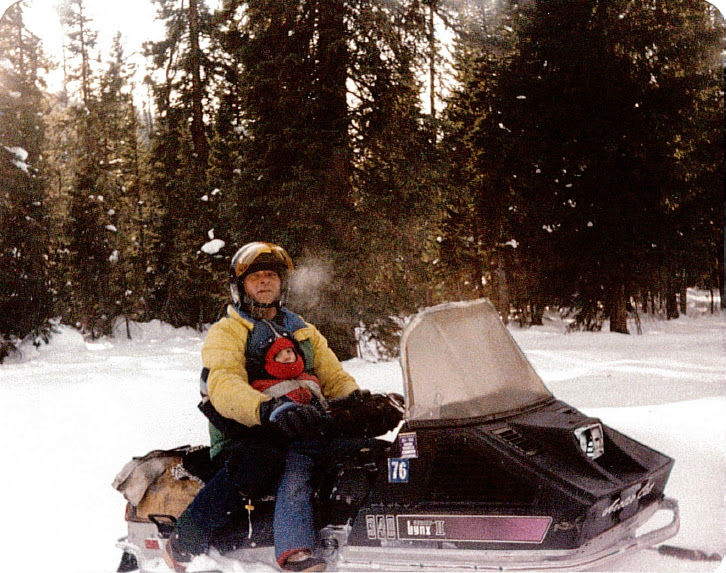
As I grew older I was able to upgrade to my dad’s El Tigre when he bought a used Wildcat 700. I remember feeling the power of the El Tigre and how it seemed twice that of the old Pantera. It felt great to be able to ride a newer machine. On one trip in particular, I recall spending an entire afternoon on one hill trying to get to the top so we could make home. It was the only way out, and the snow was deep enough that it nearly seemed impossible. We finally made it, and by the time we got home it was the middle of the night. I have many memories like that, and they will stick with me forever. Those were situations that tested not only your skills, but also your character.
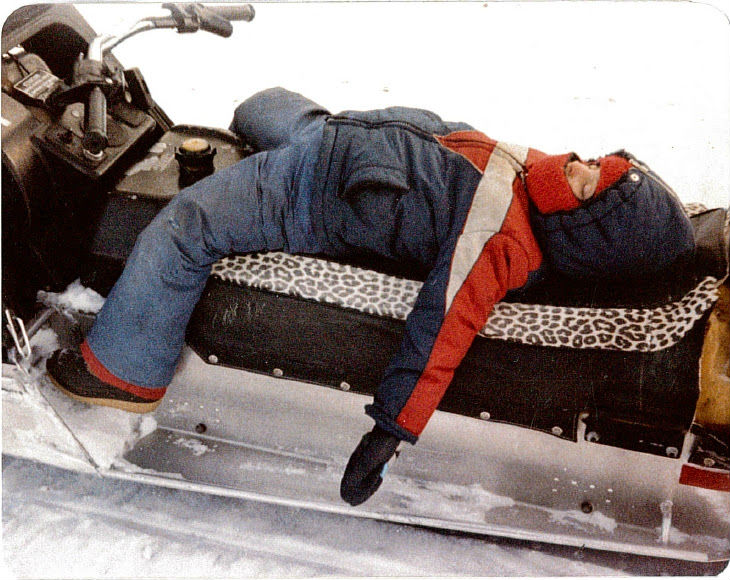
Too much fun!
It was all worth it because we saw things no one else did, and we went places no one else had even attempted. That exhilarating feeling was my drug, and it shaped me. It was not our sleds that allowed us to go those places—there were far superior machines at the time—it was our drive to push ourselves and the sleds we had to their limits. It taught me how to be tough when needed. We would wear bread sacks over our socks to keep our feet dry. The gear we had wasn’t the best and wasn’t all that waterproof. My gloves would be rock solid by the end of the day, and I had to suck on them to loosen them up to get them to bend around the handlebars. My drive to ride overcame my need to stay warm and dry. We got by with what we were given and didn’t complain. I wouldn’t trade the experiences or the memories of those struggles for the nicest sleds, or the nicest gear in the world—those experiences made me who I am today.

It was all worth it when we went places no one else did.
I was 14 years old when I was finally able to purchase my very own sled. It was a 1994 ZR700. I found it at a garage sale and just fell in love with it. The only problem was that I had zero dollars at the time, but I did have a summer job lined up. I talked with my parents about it and after some pleading and promising, they co-signed on a loan and I purchased it for $3500. I had one summer to pay off the loan. I worked my butt off at a nursery/landscaping business that summer and accomplished my goal.
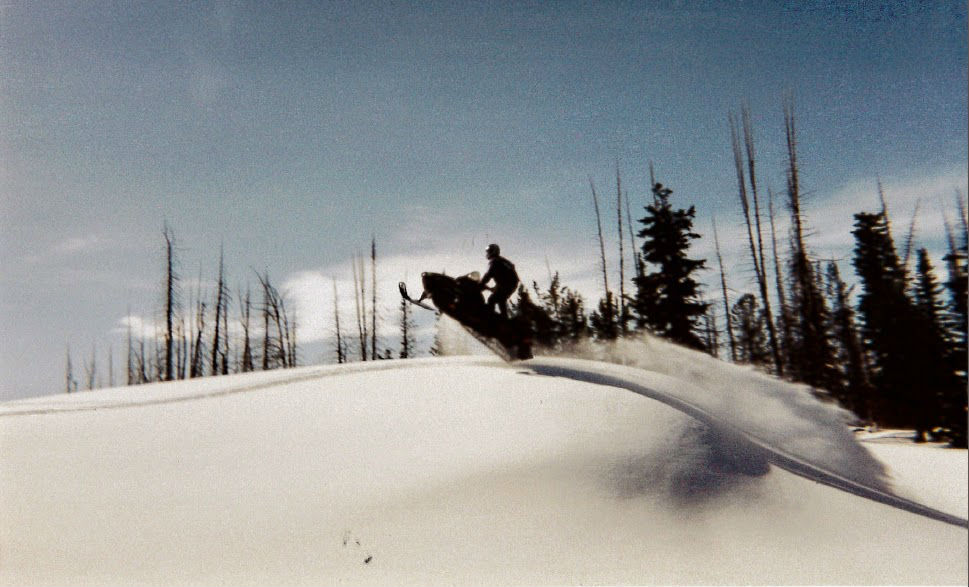
The first sled I ever paid for myself, a 1994 ZR700.
It was the greatest feeling to work hard for something and have it be all yours. Being born and raised in Jackson Hole, Wyoming, that wasn’t the case for a lot of others around me. There were a lot of kids who every year were handed brand-new sleds with all the extras and add-ons included. If they wrecked their sled, their parents would pay for it to get fixed, or they would end up with another new one. I knew that my sled was it. If anything really bad happened to it I would be done riding. This taught me to stay in control at all times and it also hardened the “risk/reward” dynamic of riding. Some risks are not worth the reward, period, but if people don’t push themselves, they won’t progress very fast either. It’s all about calculated risks. I like to push myself past my comfort level where the end result won’t be catastrophic failure.
I have progressed in my riding; it’s pretty incredible the places that I have been able push myself. It now takes more to get out of my comfort zone, but that’s when riding with someone who is more challenging helps. A friend that will constructively push is priceless. I don’t like to hang around people who constantly have to prove themselves: the show-offs or the braggers. My favorite people are the ones that are just out to have fun and challenge their limits of where they can take a snowmobile. Negativity and criticism will not make a better rider, so chose riding buddies wisely.
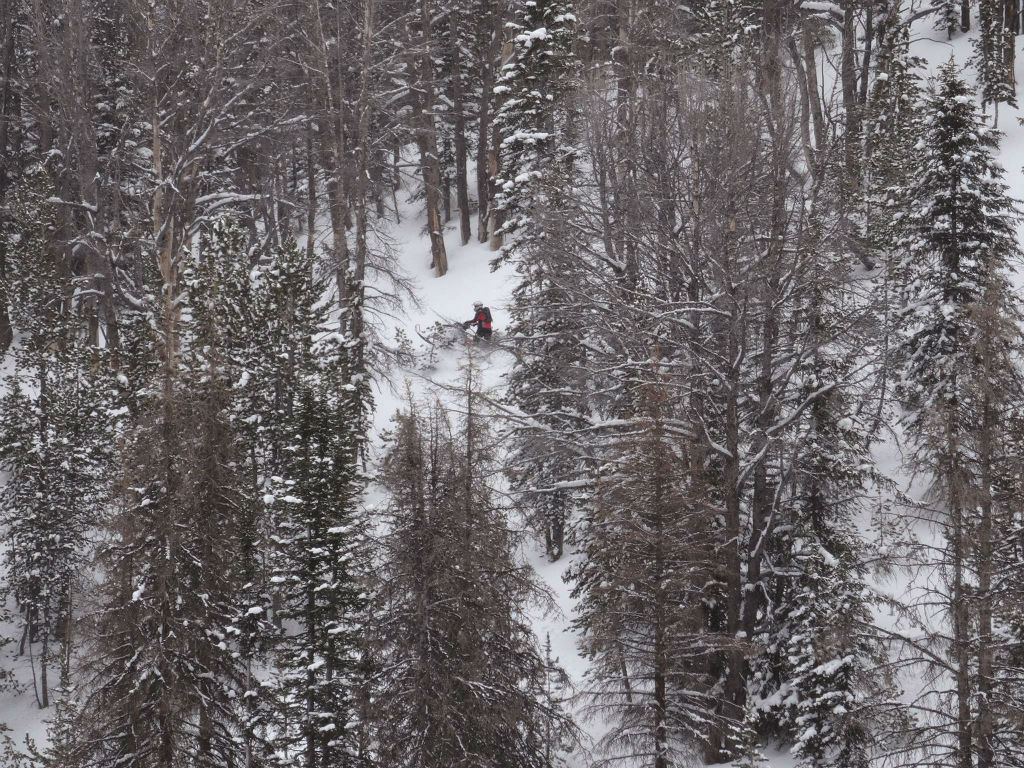
I have progressed in my riding, and it takes more to get me out of my comfort zone.
If people only take away one thing, it should be this: snowmobiling is NOT about who someone is, where they come from, what they ride, how much money they have in their sled, or what kind of pickup they have, etc. It’s the fact THAT they ride. If some guy on a 1996 700 is out riding and enjoying himself—he wins. If a family is out together making memories and having a great time— they win. One doesn’t have to have the newest sled on the block, the biggest turbo or the fanciest matching gear. If someone is fortunate enough to be able to ride a newer sled, feel lucky. Don’t put others down if they aren’t riding the newest and baddest sled. This follows an old saying I grew up with. “Grant that I may not criticize my next door neighbor until I have walked a mile in his shoes.” Just because someone lives in the mid-west or back east, does not mean they are not passionate about this sport. Oftentimes they are putting out more money and time to come ride in the mountains than the people who live here.
Currently I have a family and have invested a lot of time teaching them the art of backcountry riding. I’ve also started a clinic/guiding business called BackCountry Navigators. My business partner and I take out a wide range of riders with varying ability levels and we build on what they already know. We like to push their boundaries, while helping them feel confident in their new skills. We also keep our prices very low to allow those who can’t afford the higher priced clinics an opportunity to learn the correct way to ride in the backcountry. I am now blessed enough to be a fully sponsored rider. Several companies believe in me enough to allow me to represent their businesses. I ride a new Polaris Pro from Driven Powersports, SCS Unlimited creates wraps that protect and personalize my sled. I wear a full set up of the best gear known to man from Motorfist. A Highmark avalanche bag from Snowpulse keeps me safe, and several local businesses support our cause. I can say that I feel like the luckiest man alive. There isn’t a day that goes by that I don’t think about where I came from and what I have now. I get asked by a lot of people how to get sponsors and do what I do. I tell them they have to earn it. It’s not about getting free stuff. It’s about promoting this sport, and becoming a figure that others look up to. I am constantly trying to find ways to make my sponsors proud about the fact that they have invested in me. I try to make every rider I come across feel like family. I legitimately want everyone to have the greatest time while riding. Everything is connected. The more people that get into the sport, the better it is for all of us. Manufacturers can create better machines, lodges can expand, and small businesses that rely on sledders can grow. If we have enough passionate people, we also create a voice that can’t be quieted by extreme environmental groups or others that try constantly to shut down our riding areas.
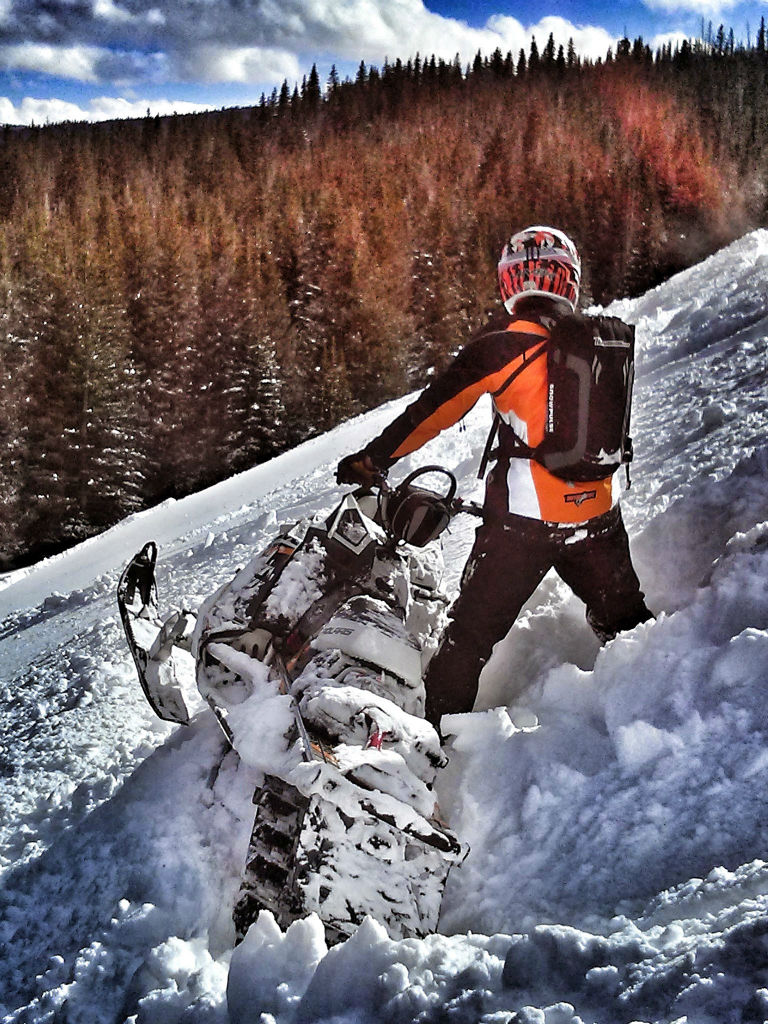
Luke riding today as a sponsored athlete.
The bottom line is: get out and ride. We are all after the same thing. To some it’s just a sport, others it’s a hobby, and to a few, snowmobiling is a passion. It is my passion. It is THE thing that my life revolves around. Take pride in our ability to ride—be the example for others to aspire to. Whether we’re professionals, beginners or riders who just like to have fun, respect the sport. When it comes to taking off the gloves and fighting for what we love, I hope we can all join in and stand up for our sport. It’s the greatest one out there, and I hope we all grow old doing it together.
– Luke Sander
BackCountry Navigators


